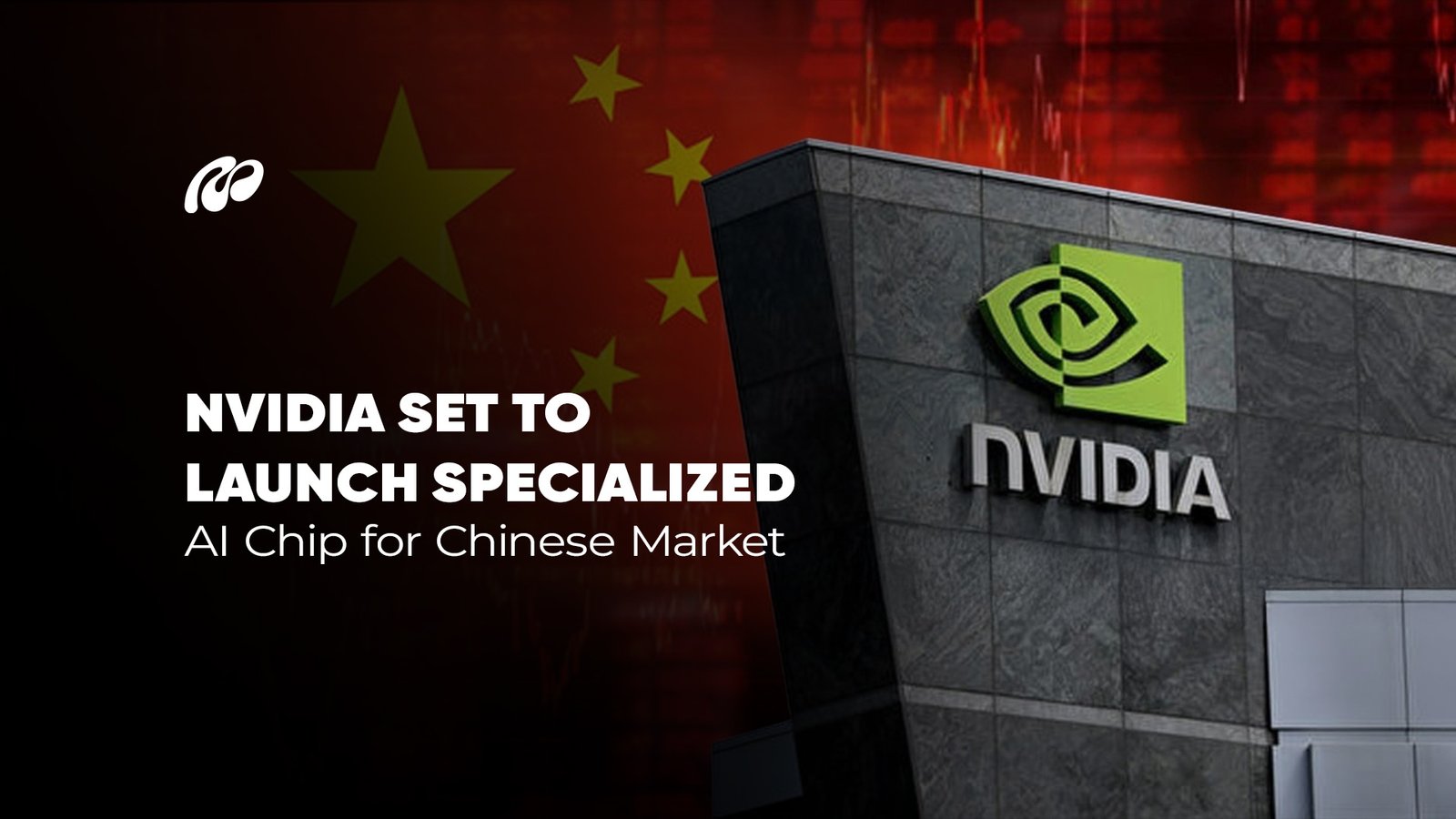Summary:
- Nvidia is preparing to release a specialized AI chip designed specifically for the Chinese market, adjusting its product line to navigate ongoing geopolitical tensions and regulatory constraints.
- This new China chip is expected to deliver AI capabilities tailored to meet local market requirements, enabling Nvidia to maintain its position despite tighter export controls on high-end processors.
- Compared to the global RTX latest version, the Chinese variant is anticipated to feature reduced computational power, ensuring it complies with international trade rules while still supporting core machine learning operations.
- As the race for new AI dominance intensifies, Nvidia’s regional focus demonstrates a tactical pivot, recognizing China’s massive demand for semiconductors and its growing investment in AI and data infrastructure.
- The chip launch aligns with increased interest in China tech news, where advancements in AI hardware, mobile integration, and real-time data processing are reshaping the industry landscape.
- Jaguar chips and RTX voice enhancements are also part of Nvidia’s broader portfolio, illustrating how the company balances innovation with regional compliance to keep pace with global AI adoption.
- With demand rising for capabilities like photo translate app functionality, pixel art video synthesis, and image to video AI generation, Nvidia is tailoring its products to align with local consumer and enterprise needs.
- This strategy ensures Nvidia remains competitive in the world’s second-largest economy while strengthening its presence in sectors relying heavily on Google search by image, favorite photos, and other AI-driven technologies.
In a strategic response to rising geopolitical and trade complexities, Nvidia has officially announced plans to release a specialized AI chip tailored for the Chinese market. This custom design marks a notable shift in Nvidia’s global approach, aiming to meet demand in China while aligning with U.S. export regulations. The launch comes amid a wave of China tech news that underscores the nation’s increasing appetite for high-performance computing solutions.
The new China chip reportedly features a modified GPU structure that excludes components restricted by U.S. policies, such as high-bandwidth memory and advanced interconnect capabilities, yet retains enough power to support core AI tasks. This allows Chinese enterprises to continue utilizing Nvidia China offerings across domains, including AI development, data science, and cloud infrastructure.
this development draws parallel attention to emerging AI governance solutions like GPT Zero, which addresses AI content authenticity in academic and enterprise environments. While GPT Zero focuses on ethical safeguards in AI usage, Nvidia’s chip strategy reflects a technical adaptation to policy landscapes, both representing tailored innovation within their respective AI ecosystems.
By delivering this region-specific hardware, Nvidia not only preserves business continuity but also strengthens its reputation as a flexible provider in the face of global restrictions. The new chip is expected to support applications such as image processing, machine learning, and enterprise cloud AI while operating within the compliance framework required for exports to China. This could also pave the way for custom deployments involving Jaguar chips, RTX latest version enhancements, and future RTX voice capabilities in localized formats.
Nvidia’s China AI Chip: Key Differences Explained
To meet U.S. export regulations while maintaining its foothold in Asia’s largest tech market, Nvidia has introduced a modified AI chip for China. This version is purposefully scaled down in memory throughput and processing capacity, without compromising baseline AI functionality. Designed for compliance, this new AI hardware differs from its global counterparts through capped interconnect speeds and limited parallel processing power.
Even with these reductions, the chip remains fully functional for a wide range of AI-driven applications in industrial automation, China tech development, and smart infrastructure projects. By fine-tuning hardware for regional needs, Nvidia ensures that innovation continues despite trade constraints.
These tailored solutions reflect a broader evolution in tech, where both hardware and software are adapted to specific user environments and compliance standards. For instance, the way development teams in Dallas customize mobile applications based on regional needs mirrors how Nvidia adjusts chip architecture to navigate export controls. Whether it’s AI integration or infrastructure compatibility, the emphasis remains on delivering efficiency without compromising on compliance or performance.
At a broader level, this rollout also connects to recent developments tracked on Mattrics News, where localized innovations and AI policy shifts continue to define new tech boundaries. By adjusting the technical profile of their AI chips without sacrificing functionality, Nvidia ensures usability across markets with different compliance requirements.
This redesigned AI chip marks a milestone in balancing regulatory constraints with the growing need for new AI hardware in Asia’s largest tech economy. With China’s increasing push for domestic semiconductor independence, this move also allows Nvidia to remain competitive while respecting trade barriers.
“Nvidia CEO to Meet Chinese Leaders”
Amid mounting geopolitical and trade tensions, Nvidia’s CEO is reportedly preparing to meet high-ranking Chinese officials to address the company’s strategic positioning in the region. This development aligns with Nvidia’s latest move, launching a specialized China chip, to comply with U.S. export regulations while still serving demand in one of its most important markets. These meetings may focus on balancing innovation with policy constraints, ensuring that Nvidia’s new AI solutions remain viable under evolving global conditions.
This leadership engagement isn’t happening in isolation. Global tech enterprises increasingly seek alignment between business objectives and governmental frameworks. In a related context, digital innovation providers like Mattrics continue to support AI-driven product development and compliance-ready solutions tailored for fast-changing markets. Whether it’s adapting product features or optimizing infrastructure for specific user bases, the goal remains consistent: resilience in execution without compromising regional relevance.
As Nvidia’s leadership enters strategic dialogue with Chinese policymakers, the tech world watches to see how this high-level diplomacy will impact not only chip availability but also broader China tech news and AI supply chains worldwide.





